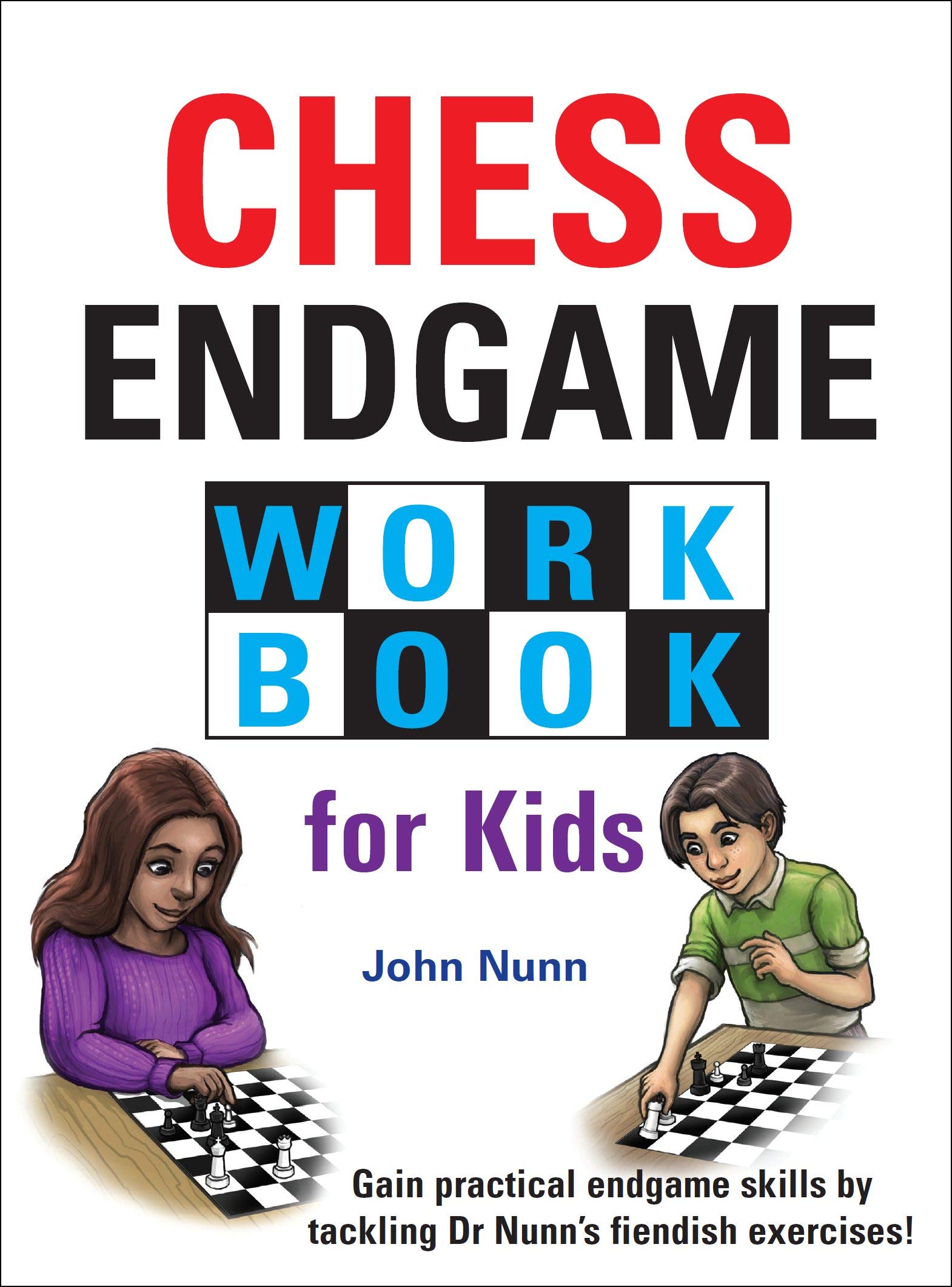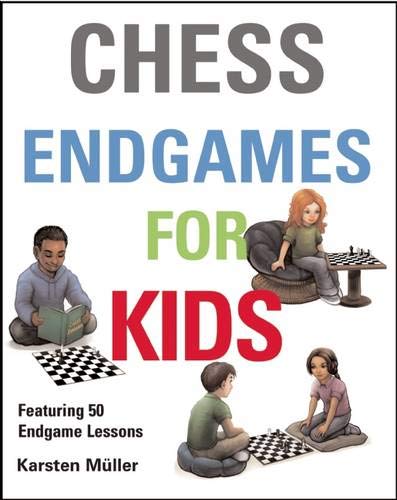Chess Endgame Workbook for Kids : John Nunn

John Nunn has written around thirty books on chess and many of these are some of the finest chess books published in any language : Secrets of Pawnless Endings (1994, Batsford) easily is a candidate for the all time list. John is a director of Gambit Publications Ltd. together with Murray Chandler and Graham Burgess.

Chess Endgame Workbook for Kids is the eighth in a highly successful series of “for Kids” books. Indeed, we recently reviewed Chess Opening Traps for Kids and Chess Tactics Workbook for Kids. The Workbook theme is likely to be extended other “for Kids” style books from Gambit Publications.
This workbook is a follow-up to the original (2015) and much liked Chess Endgames for Kids by Karsten Müller :

From the rear cover :
“This is a book for those who have started to play chess and want to know how to win from good positions and survive bad ones.
The endgame is where most games are decided, and knowing all the tricks will dramatically improve your results. Endgame specialist John Nunn has drawn upon his decades of experience to present the ideas that are most important in real games. Step by step he helps you uncover the key points and then add further vital knowledge.
Chess Endgame Workbook for Kids is the third in a new series of books that help players gain chess skills by solving hundreds of carefully chosen exercises. The themes are similar to those in Gambit’s best-selling ‘Chess for Kids’ series, but the focus is on getting hands-on experience. Many positions build on ones given earlier, showing how advanced ideas are normally made up of simpler ones that we can all grasp.
Each chapter deals with a particular type of endgame and features dozens of exercises, with solutions that highlight the key points. For each endgame we are given tips on the themes that are most important and the strategies for both sides. The book ends with a series of test papers that enable you to assess your progress and identify the areas that need further work.
Dr John Nunn is one of the best-respected figures in world chess. He was among the world’s leading grandmasters for nearly twenty years and won four gold medals in chess Olympiads. In 2004, 2007 and 2010, Nunn was crowned World Chess Solving Champion, ahead of many former champions.”
To get some idea Gambit (via Amazon) provide a “Look Inside” at their Kindle edition.
Chess Endgame Workbook for Kids is robustly (!) hardbound in a convenient size such that weights are not need to keep it propped open (unlike some A5 paperbacks) meaning studying with this book is more convenient than with many books. The layout and printing is clear (as you would expect with Gambit) with numerous diagrams at key moments in each, relatively short, game. In essence, players under 18 (for whom this book is intended) will find it easy to dip in out of and it can be used without a board (although BCN and most chess teachers and coaches would always recommend following each game on a “proper” board).
As you would expect with Gambit, the notation is English short form algebraic using figurines for pieces. A previous criticism (ibid) has been addressed in that each diagram has a symbolic “whose move it is” indicator. Each diagram does have coordinates which are very welcome for the younger junior reader.
The book is divided into 8 chapters as follows :
- The Lone King
- King and Pawn Endings
- Minor Piece Endings
- Rook Endings
- Rook and Minor Piece Endings
- Queen Endings
- Endgame Tactics
- Test Papers
Each chapter has an introduction to the type of ending examined, followed by a good number (at least 20 – 40 ) of exercises followed by “Tougher Exercises”. Each chapter concludes with Solutions (and excellent explanations) to each exercise.
Here is an example (#39) from Chapter 2 :
“Should White play 1 a5 or 1 Kc6, and what is the result ?”
The solution is at the foot of this review.
Just as for Chess Tactics Workbook for Kids, it was clear when working through the easier set of exercises that the author had thought carefully about their sequence since the reader should (we did for sure !) notice the level of difficulty increasing slowly but surely. The solutions are remote from the puzzles nicely avoiding the “accidentally seeing the solution” issue one gets with lesser books. The solutions themselves are clear and concise and instructional in their own right.
We found chapters 7 & 8 particularly rewarding and Test Papers puts the previous chapters into context. Precise calculation is order of the day rather then intuition.
One negative comment we would make (and we are struggling to make any!) concerns the cover. “Never judge a book by its cover” we are told and you might look at this book cover and think it was suitable for say primary aged children. We would say not but we would suggest it suitable from secondary aged children. We would say strong juniors from 12 upwards would read this book and enjoy it.
As we previously mentioned in our review of Chess Opening Traps for Kids, The title and cover might, perhaps, put off the adult club player market. However, the content is totally suitable for adult club players upto say 180 ECF or 2000 Elo.
In summary, we recommend this book to any junior or adult who wishes to improve their core endgame skills and results. It makes an excellent book for the new year for young players and the young at heart !
John Upham, Cove, Hampshire, February 27th 2020

Book Details :
- Hardcover : 128 pages
- Publisher: Gambit Publications Ltd; Workbook edition (15 Nov. 2019)
- Language: English
- ISBN-10: 1911465384
- ISBN-13: 978-1911465386
- Product Dimensions: 17.8 x 1.3 x 22.9 cm
Official web site of Gambit Publications Ltd.

Solution to #39 :
39) At the moment White’s g-pawn holds back all three enemy pawns. The winning idea is to stalemate Black’s kings and use zugzwang to force Black to push a pawn : 1 a5! (1 Kc6? Ka7 2 Kd6 doesn’t work because White will not promote with check if Black’s king is not on the back rank; then 2…h5! 3 gxh5 g4 4 h6 g3 5 h7 g2 h8Q g1Q leads to a drawn ending with equal material) 1…Kc8 2 a6 Kb8 3 a7+ Ka8 4 Ka6 (forcing Black to self-destruct on the kingside) 4…h5 5 gxh5 f5 6 h6 f4 7 h7 f3 8 h8Q#.




